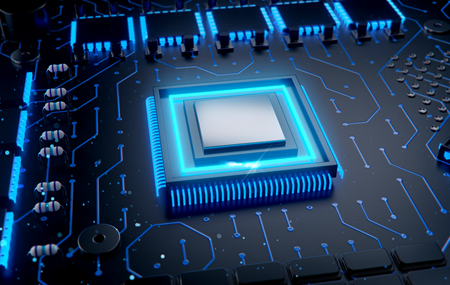First, what is an IoT chip?
We know that there are many types of chips. So what is an IoT chip? First, we need to know what the Internet of Things is. Simply put, a network of interconnected things. Its core is still the Internet, but it is not derived and expanded on a people-oriented basis, but to open up the connection channels between things.
In fact, IoT chips are ultimately chips, but the roles are more subdivided and IoT chips are more flexible. Essentially integrated circuits, but more directional and need to be applied to specific environments. Higher requirements have also been put forward for enterprises. Because IoT chip users need more solutions. Because it is often not just microcontroller products.
Second, what types of IoT chips are there?
1. Security chip
Enjoying all the convenience and cloud synchronization provided by cutting-edge Internet technology, people now have to face information security risks and worry about their personal and property information. The confidential work chip now acts as a “storage box”, storing the most important personal information and password data on the confidential work chip.
According to the principle of the security chip, only encrypted data can be output and encryption cannot be input. Therefore, the encryption method and decryption are performed inside the security chip, and the results can be output to a higher level to avoid the possibility of password leakage. The secret decryption operation chip communication port has a key length of up to 2048 binary digits. In other words, if you want to decrypt the data sent by the confidential working chip, you need to crack the code of 2048 binary numbers. This is equivalent to adding a trusted firewall to the message. Enjoy the bonuses and conveniences of cutting-edge technology with greater simplicity and peace of mind.
2. RF chip
A radio frequency chip is an electronic component that converts wireless signal communication into a specific wireless signal waveform and transmits it through antenna resonance. Especially in the new infrastructure era of the Internet of Everything, radio frequency chips will also be widely used.

3. Mobile payment chip
In this era of Internet of Everything, mobile payment has spread into every aspect of our lives, and it is impossible to completely get rid of mobile payment. (William Shakespeare, Winston, mobile, mobile, mobile, mobile) Mobile payment chips are mainly used in smartphones, so the demand for mobile payment chips depends on the ever-changing smartphones and will become a big market for mobile payment chips.
4. Intelligent identification chip
Identity authentication is based on the physical characteristics of the human body. Physical characteristics include fingerprints, voice, face, bones, retina, iris, DNA including human identification functions, such as. There are also individual behavioral characteristics, such as signature behavior, gait, etc. In recent years, facial recognition technology has also exposed biometric technology. Due to its powerful confidential business performance, identity recognition in all fields such as financial transactions, information security, and social confidentiality is developing rapidly.
From 2002 to 2012, the average market growth rate of China’s biometric industry exceeded 60%. The market size exceeded 6 billion yuan in 2012 and was approximately 10 billion yuan in 2015. Therefore, by 2020, the market size of my country’s biometric industry is expected to exceed 30 billion. Third, IoT chips also face two major problems.
1. Market segmentation and cost management
The Internet of Things is the interconnection of all things, which means there are many types of products and many solutions. This faces this serious segmentation problem. Some chips are in high demand, but overall the types are scattered. The overall size is large, but the demand for individual products or product lines may not be large.
Second, companies must be able to control costs and launch more targeted chips in a timely manner to solve problems. Otherwise, general-purpose chips can also solve the problem, but power consumption and performance are difficult to match and are not a long-term plan. When companies only need tens or hundreds of thousands of chips, how can manufacturers satisfy them and ensure profits?It’s really a problem now
2. Safety cannot be guaranteed
The biggest issue facing the Internet of Things era is security. Security is not caused by IoT chips, but by the interconnection of everything in the entire Internet of Things era. The more terminals there are and the more link channels there are, the more vulnerable they are to attacks. Especially as the Internet of Things approaches cheap devices, it is difficult to ensure security.
Keywords: 4g industrial dtu